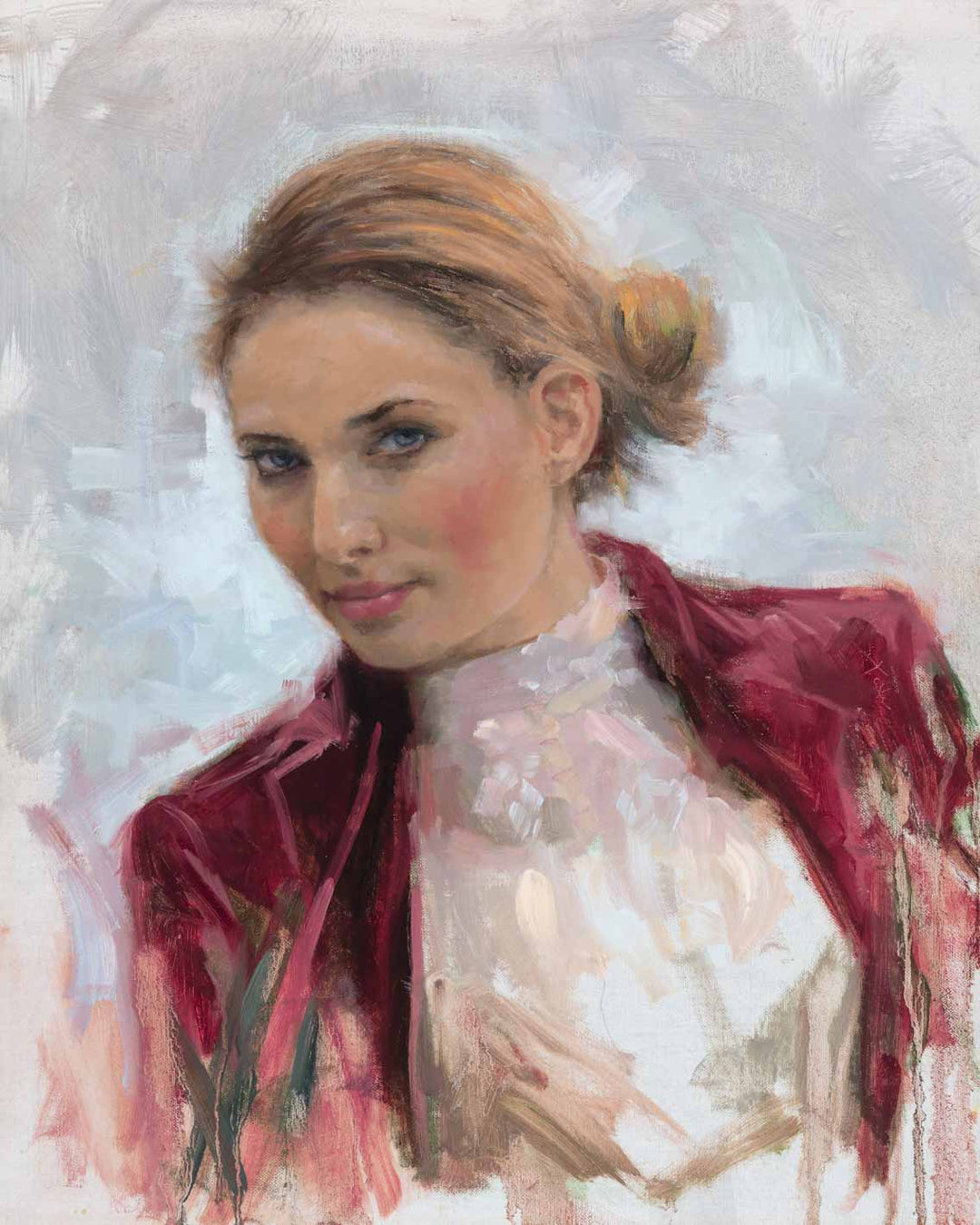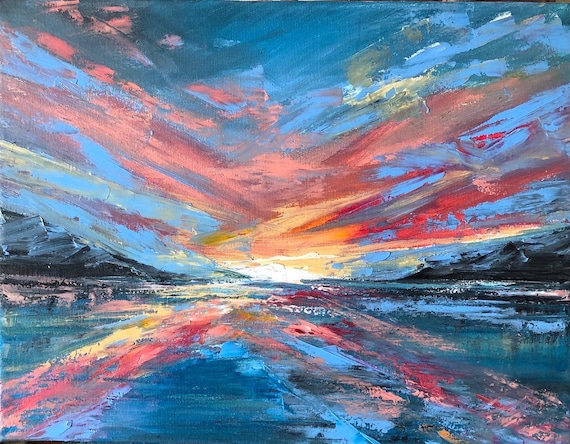Handcrafted Creations: Oil Paintings for Sale by Artists
Handcrafted Creations: Oil Paintings for Sale by Artists
Blog Article
Exploring Everything About Oil Paintings: An Overview to Recognizing Their Appeal and Worth
Oil paintings have mesmerized target markets for centuries, providing a peek into the creative mastery of various periods. Their abundant history is intertwined with innovative strategies and profound psychological expression. Comprehending the products and methods behind these artworks can boost appreciation. Furthermore, the marketplace for oil paints provides chances for collectors and capitalists alike. As one discovers this interesting world, the inquiry develops: what makes an oil painting absolutely valuable?
The Background of Oil Paint: A Journey Via Time
Oil paint has roots that date back to old times, it genuinely thrived throughout the Renaissance, when artists uncovered its flexibility and abundant color possibility. Early instances can be mapped to the 7th century, with methods evolving especially across societies. The tool came to be famous in Northern Europe in the 15th century, especially with the works of artists like Jan van Eyck, that originated its use for detailed realism and dynamic hues. This duration noted a departure from tempera paints, permitting better depth and structure. As oil paint spread, it influenced countless artists, bring about masterpieces by distinguished figures such as Leonardo da Vinci and Rembrandt. The tool's heritage proceeds, shaping the art world well into contemporary times.
Recognizing Oil Repaints: Products and Techniques
As artists explore the world of oil paints, they come across a varied variety of products and strategies that specify this medium. The primary elements of oil paint include pigments, which supply shade, and drying out oils, such as linseed, that bind the pigments and facilitate application. Numerous ingredients can change the paint's texture and drying time, enhancing flexibility. Techniques like glazing, where transparent layers are built up, and impasto, which involves applying thick paint, permit different visual effects. Furthermore, the usage of brushes, scheme blades, and also fingers can develop distinct structures and surfaces. Recognizing these products and methods enables musicians to completely share their imagination and achieve the preferred effect in their art work.
The Duty of Shade in Oil Paintings
Shade plays an essential role in oil paints, influencing both aesthetic appeal and emotional resonance. Understanding shade concept essentials, including the relationships in between shades, can boost an artist's ability to communicate mood and atmosphere. Additionally, grasping color blending techniques permits higher depth and splendor in a painting's scheme.

Color Theory Essential
Recognizing shade theory is essential for musicians dealing with oil paints, as it forms the structure for developing visually engaging and unified make-ups. Shade theory incorporates the research study of how shades engage, the color wheel, and the partnerships between key, additional, and tertiary shades. Artists use corresponding colors to improve contrasts and create focal factors, while analogous shades promote unity and cohesiveness within a piece. In addition, the ideas of warm and trendy colors affect the understanding of depth and area in a painting. Realizing these concepts allows musicians to manipulate shade efficiently, assisting the customer's eye and connecting their intended message. Proficiency of color concept ultimately improves an artist's capacity to convey feelings and concepts with their work.
Psychological Effect of Shade
The psychological effect of shade in oil paints plays an essential role in exactly how visitors perceive and link with artwork. Colors evoke certain feelings and moods, influencing the customer's emotion. Cozy tones like oranges and reds can develop a feeling of heat and power, while great tones such as blues and greens typically evoke calmness or self-contemplation. Artists tactically select shade schemes to boost narrative components, leading the audience's emotional journey. The saturation and contrast of colors further amplify these results, attracting focus and developing focus. Eventually, the interplay of colors in oil paints not only improves their aesthetic charm but additionally offers as an effective medium for psychological expression, enriching the visitor's experience and analysis.
Shade Mixing Techniques
While many facets of oil paint add to the overall composition, understanding shade mixing techniques is important for achieving wanted impacts and depth. Shade mixing can be approached via various approaches, consisting of the additive and subtractive processes. Additive mixing involves combining shades of light, while subtractive blending depends on pigments, where colors blend to develop brand-new tones. Musicians commonly utilize a minimal combination to create unified works, recognizing the relationships in between primary, secondary, and tertiary shades. Techniques such as glazing and scumbling better enhance deepness and luminosity. By masterfully mixing colors, a musician can evoke feelings, develop prime focus, and attain a sense of realistic look, ultimately boosting the painting's emotional and aesthetic influence.
Famous Oil Painters and Their Iconic Functions

Well known for their proficiency of color and method, oil painters have developed several of the most celebrated artworks in background. Prominent musicians like Vincent van Gogh astounded target markets with his stirring brushwork in "Starry Evening," while Claude Monet's "Impression, Sunrise" laid the groundwork for Impressionism. Leonardo da Vinci's "Mona Lisa" stays an enduring sign of creative genius, showcasing his skill in catching human expression. Rembrandt's "The Evening Watch" highlights his cutting-edge usage of light and shadow. Other notable numbers consist of Pablo Picasso, that reinvented contemporary art with his strong testing in works like "Les Demoiselles d'Avignon," and Georgia O'Keeffe, whose vibrant representations of blossoms and landscapes helped specify American innovation. Each artist's special design contributed considerably to the oil painting landscape.
How to Review the Top Quality of an Oil Paint
Assessing the quality of an oil paint includes a careful analysis of workmanship techniques, along with an evaluation of shade and structure. Observing brushwork, layering, and the application of paint can disclose the artist's ability degree. Furthermore, the interplay of shades and the overall plan of components add significantly to the paint's aesthetic worth.
Analyzing Workmanship Techniques
A thorough analysis of workmanship strategies is important for establishing the quality of an oil painting. Evaluators ought to first check out the application of paint; thick, distinctive brushstrokes may suggest a competent hand, while overly consistent applications might suggest a lack of deepness. oil paintings for sale. The layering strategy is likewise vital; the visibility of lusters and varied density can enhance brightness and intricacy. Additionally, the top quality of the materials utilized, such as the canvas and pigments, plays a substantial role in durability and general visual. Focus to detail in components like edges and changes between shades reflects the musician's commitment to their craft. Eventually, these strategies add to the paint's emotional effect and market worth, working as indications of the artist's ability and intent
Evaluating Shade and Composition
While examining the high quality of an oil painting, one must concentrate on the interplay of color and composition, as these aspects are fundamental to the artwork's general influence. Shade selections can establish and evoke feelings state of mind; therefore, the artist's scheme should be taken a look at for harmony and contrast. A well-balanced composition guides the viewer's eye and produces a sense of unity. Musicians frequently utilize methods like the policy of thirds or leading lines to improve visual rate of interest. In addition, making use of light and darkness can add depth, enhancing the three-dimensionality of the painting. Ultimately, an effective oil paint marries color and composition, engaging the visitor and welcoming a much deeper gratitude of the artist's vision and technique.
Taking care of and Preserving Oil Paintings
Correct care and preservation of oil paints is essential for maintaining their integrity and longevity. To safeguard these artworks, it is important to show them far from direct sunshine, which can create fading and discoloration. Maintaining a secure setting with controlled temperature and moisture additional aids in avoiding damage. Cleansing must be done carefully using a soft, completely dry fabric, preventing any kind of extreme chemicals that can hurt the paint or varnish. Regular assessments for indicators of degeneration, such as splitting or flaking, are suggested. When transporting or keeping oil paintings, correct padding and framework are necessary to stay clear of physical injury. Eventually, persistent care adds to the visual charm and worth of oil paintings gradually.
The Market for Oil Paints: Spending and collecting
Comprehending the market dynamics for oil paints is important for collection agencies and investors alike. The worth of these art work is influenced by different variables, including the artist's track record, historical importance, and present fads. Collectors typically look for items that reverberate personally while taking into consideration prospective appreciation in worth. Auctions and galleries act as main venues for purchasing and marketing, with costs fluctuating based on need and rarity. Investing in oil paints calls for study into the market, as well as an understanding of credibility and provenance. Furthermore, emerging musicians might provide possibilities for substantial returns, while developed names can regulate high rates. Overall, a calculated technique to gathering can produce both aesthetic enjoyment and economic incentives.

Regularly Asked Concerns
What Are the Ecological Effects of Oil Paint Products?
The ecological influences of oil paint products include the launch of unpredictable natural substances (VOCs), hazardous waste generation, and resource extraction for pigments. These aspects add to air pollution and eco-friendly destruction, raising concerns among environmentally conscious artists and consumers.
Exactly How Do Different Canvases Affect Oil Painting Results?
Different canvases affect oil paint results substantially. Surface area, absorbency, and appearance high quality can change paint application, drying times, and color vibrancy. Musicians often choose specific canvases to attain wanted impacts and improve their artistic expression.
Can Oil Paintings Be Recovered if Harmed?
Oil paints can undoubtedly be brought back if damaged. Specialist conservators use various techniques to repair splits, clean surface areas, and address staining, ensuring that the artwork maintains its initial elegance and value for future generations.
What Are the Signs of an Original Oil Painting?
The indications of an initial oil painting consist of visible brush strokes, texture variants, and an irregular canvas weave (oil paintings for sale). In addition, credibility might be validated with provenance, trademarks, and the existence of a varnish layer unique to oil tools
How Has Technology Influenced Modern Oil Paint Techniques?
Technology has actually considerably influenced modern-day oil painting techniques by introducing electronic devices for preparation, improved materials for structure and durability, and online systems for marketing and sharing art, therefore broadening artists' creative possibilities and target market get to. Oil oil paintings for sale painting has roots that date back to old times, it absolutely grew during the Renaissance, when artists uncovered its versatility and abundant shade possibility. The psychological influence of color in oil paintings plays an important function in how visitors connect and regard with artwork. While many facets of oil painting contribute to the general composition, grasping shade blending strategies is important for accomplishing wanted results and depth. Assessing the high quality of an oil paint entails a mindful assessment of craftsmanship methods, as well as an evaluation of shade and make-up. While evaluating the quality of an oil painting, one must concentrate on the interplay of color and structure, as these elements are essential to the artwork's overall impact.
Report this page